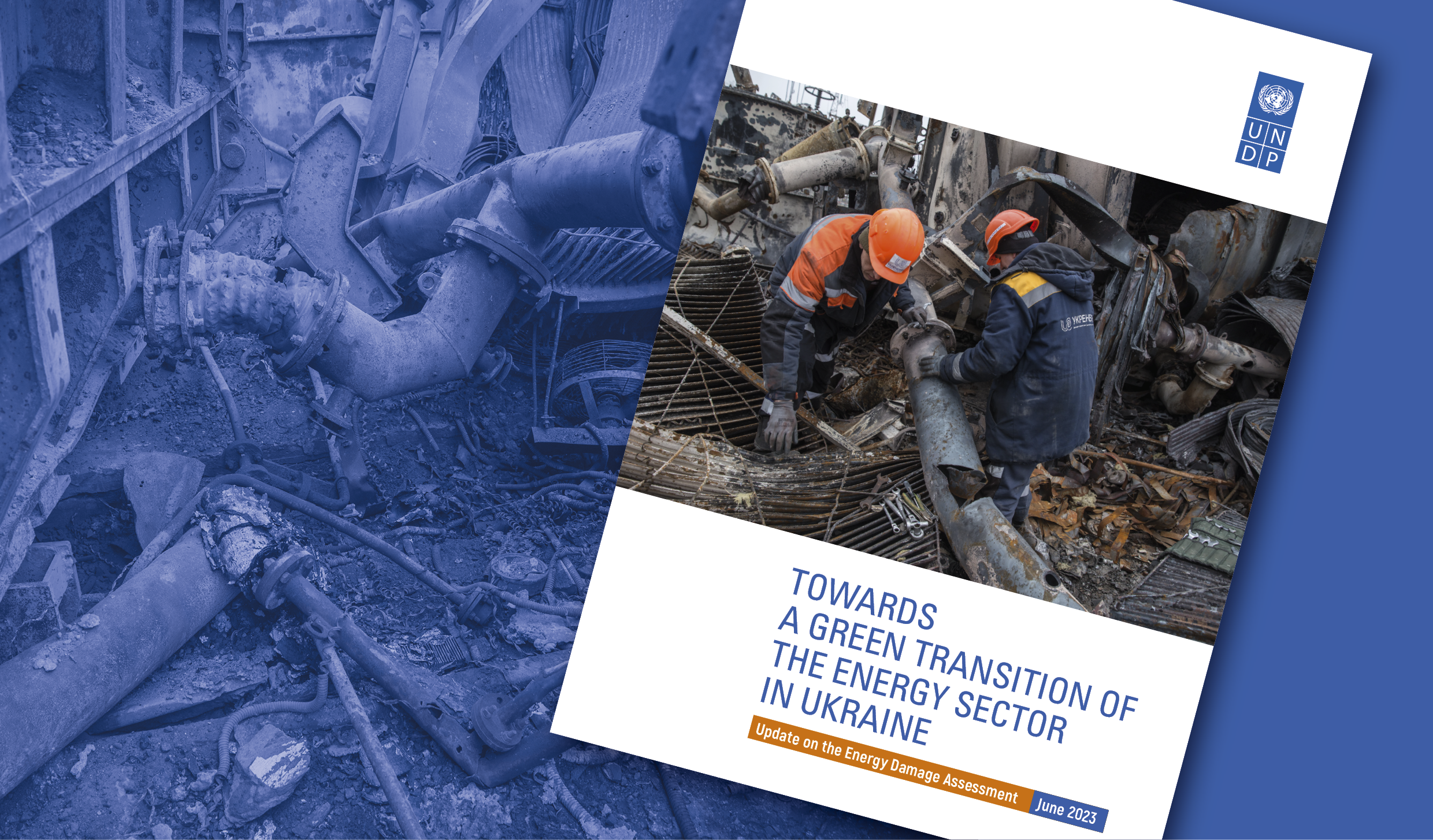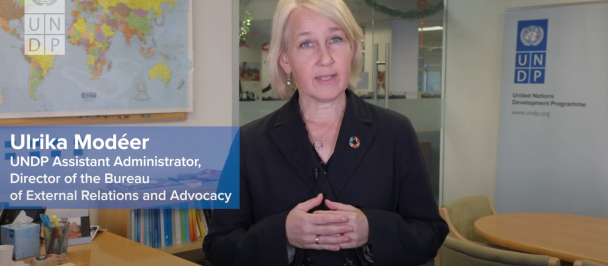New report also reveals roadmap for resilient green recovery and closer integration with EU
UNDP energy damage assessment for Ukraine reveals continued vulnerabilities
27. June 2023

Illustration: Pavlo Reznikov / UNDP in Ukraine
KYIV, 20 June 2023 – As Ukraine's energy sector reels under the impact of relentless attacks, a new report released today offers a sobering assessment of the status quo and charts a strategic course towards recovery and resilience.
The report, compiled just before the destruction of the Kakhovka Dam, reveals that the Ukrainian energy system remains extremely vulnerable and continues to operate in emergency mode with a reduced and limited safety margin, grappling with damage costing more than $10 billion.
Ukraine's power system continues to operate in an emergency mode, which affects both power grids and generation. The report’s findings show that an alarming 42 out of 94 (45 percent) of vital high-voltage transformers in government-controlled territories have been damaged or destroyed due to missile or drone strikes since the beginning of the current stage of the war. More than half of these transformers have endured repeated attacks, thwarting attempts at repair.
According to the report, power generation capacity has been reduced to nearly 50 percent of its pre-2022 levels. Out of nearly 37 GW of installed capacity, over 19 GW have been destroyed, damaged or occupied since February 2022. The situation is aggravated by the significant decline in manoeuvring capacities, including the loss of more than 67 percent of thermal power generation capacity.
This widespread damage significantly affected energy supply during the recent winter and continues to threaten the stability of access to power for Ukrainian consumers.
UNDP Resident Representative Jaco Cilliers said the findings of the report underscore the urgent need for swift, coordinated, and strategic action. “UNDP’s assessment makes a compelling case for aligning immediate response measures with the mid-term objectives of the National Energy Strategy,” Cilliers said. “The de-facto loss of obsolete coal-fired generation shall be viewed as an opportunity to accelerate the green transition and decentralization of the sector. We have already started cooperation with several municipalities with a view to secure their immediate energy supply needs, but also to pave the way to financing the development of greener and more resilient energy infrastructure.”
The report proposes a set of clear and actionable recommendations to build the energy sector back stronger, greener and more resilient than before. UNDP is taking these recommendations as guidelines in its cooperation with national and local stakeholders on the recovery of the energy sector. The guidelines include:
- Distributing generation sources across the country and decentralizing the power system to enhance resilience and adaptability.
- Introducing modern, highly manoeuvrable, and environmentally-friendly generation facilities to bolster the power system's manoeuvring capacities.
- Increasing the share of renewable energy sources in the power system, tapping into the vast potential of clean and sustainable energy.
- Initiating a gradual reduction and eventual phasing out of coal, in line with Ukraine's commitment to reducing CO2 emissions and contributing to global climate change mitigation efforts.
- Exploring further opportunities to improve the efficiency of the use of nuclear and hydro power capacities and maintaining a balanced energy mix.
Note to media: Because the Kakhovka Dam had been under the temporary military control of the Russian Federation, its hydro-power generation capacities had been unavailable since April 2022. However, following the dam’s destruction on 6 June, and although having little impact on the power grid, there have been immediate and detrimental downstream consequences on a wide range of critical energy infrastructure facilities, including power distribution, heating, gas, water supply and sanitation. Preliminary assessments indicate that more than 200 distribution power substations have been completely destroyed, along with dozens of boiler houses.
Background: The report, Towards a Green Transition of the Energy Sector of Ukraine, is a successor to the 2022 Ukraine Energy Damage Assessment, a comprehensive study jointly prepared by UNDP and the World Bank. While the previous report offered an initial overview of the damage sustained by the energy sector and covered the period February-December 2022, the current analysis performed by UNDP experts presents updated insights into the severity and extent of this damage, and covers January-April 2023. It builds on data provided by the Government of Ukraine, specifically the National Security and Defense Council, Ukrenergo, and the Ministry of Energy.
Access the full report here.
Media enquiries: For additional information or to arrange interviews, please contact Yuliia Samus, UNDP Ukraine Head of Communications; e-mail: yuliia.samus@undp.org +38050 4860724.

 Locations
Locations


